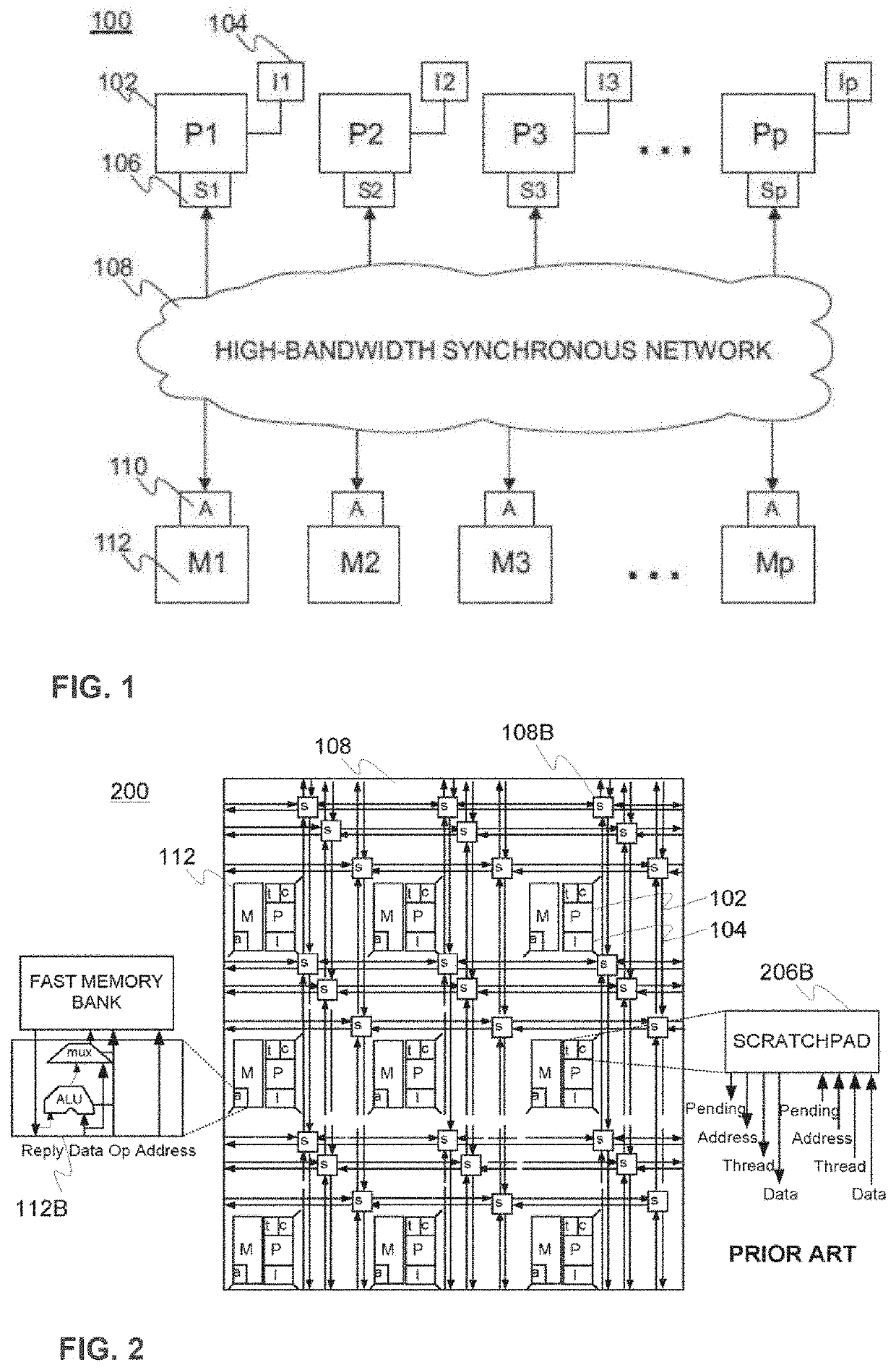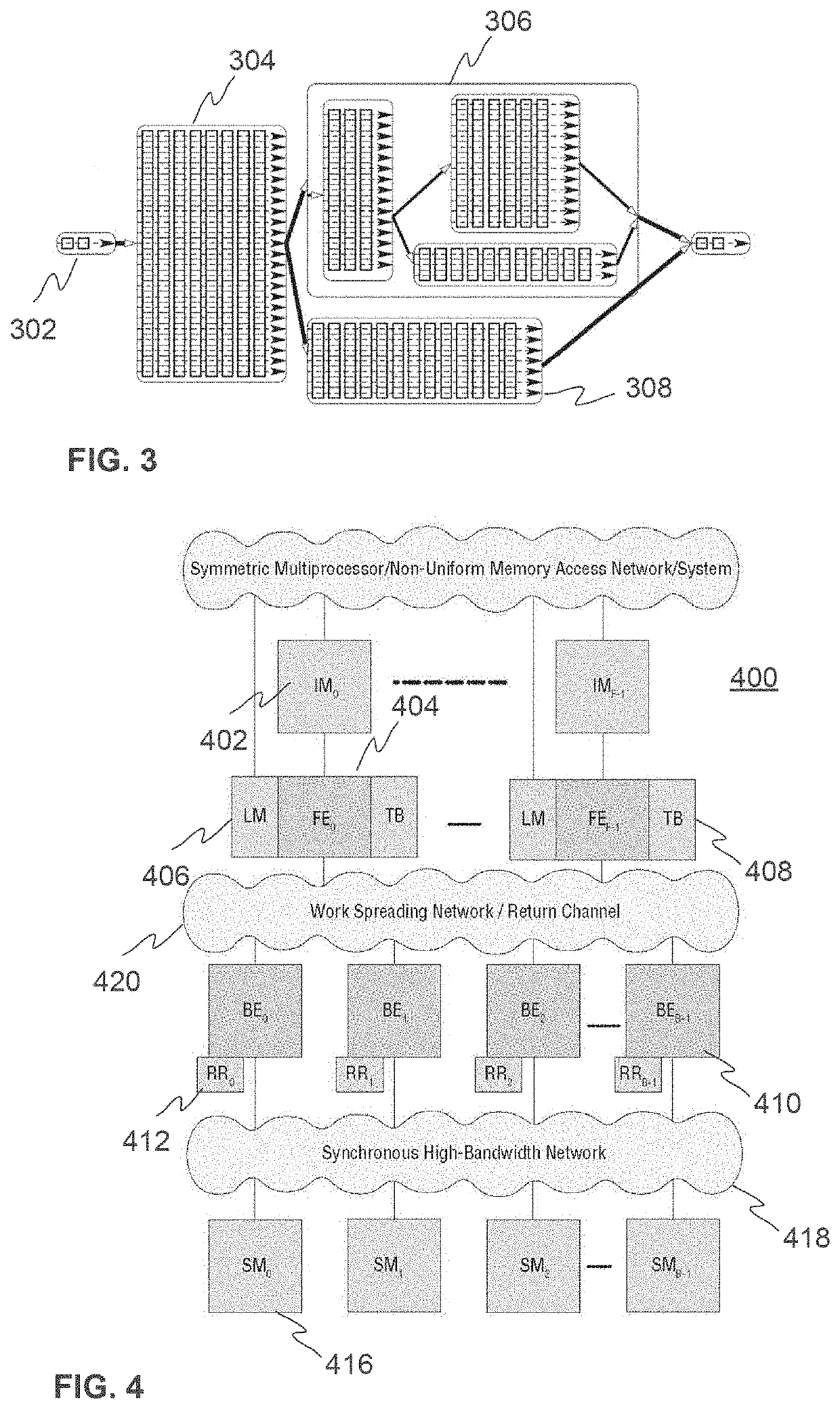Method and arrangement for handling memory access for a tcf-aware processor
a memory access and memory technology, applied in the field of computer technology, can solve the problems of wasting resources for code containing self-similarities, unable to efficiently execute code with controlled parallelism and heterogeneity between threads, and unable to organize the efficient cooperation between a large number of parallel threads, so as to improve performance, simplify the partitioning of the processor, and keep the latency low
- Summary
- Abstract
- Description
- Claims
- Application Information
AI Technical Summary
Benefits of technology
Problems solved by technology
Method used
Image
Examples
Embodiment Construction
[0048]Firstly, the ESM architecture shall be reviewed. In FIG. 1, a high-level illustration of a scalable architecture to emulate shared memory on a silicon platform is shown. It comprises a set of processors (cores) P1, P2, P3, . . . ,Pp 102 connected to a physically distributed, but logically shared (data) memory M1, M2, M3, . . . ,Mp 112 via a physically scalable high bandwidth interconnection network 108. Active memory units 110 in connection with data memory 112 can be considered as memory control logic units utilized to process the memory references. The active memory units 110 are arranged to manage computation related to cases in which multiple memory references are targeted to the same memory location during e.g. multi(-prefix) operations, for instance. Instruction memory modules I1, I2, I3, . . . , Ip 104 are configured to carry the program code for each processor 102. To efficiently emulate shared memory by the distributed memory-based implementation, the processors 102 a...
PUM
 Login to View More
Login to View More Abstract
Description
Claims
Application Information
 Login to View More
Login to View More - R&D
- Intellectual Property
- Life Sciences
- Materials
- Tech Scout
- Unparalleled Data Quality
- Higher Quality Content
- 60% Fewer Hallucinations
Browse by: Latest US Patents, China's latest patents, Technical Efficacy Thesaurus, Application Domain, Technology Topic, Popular Technical Reports.
© 2025 PatSnap. All rights reserved.Legal|Privacy policy|Modern Slavery Act Transparency Statement|Sitemap|About US| Contact US: help@patsnap.com



